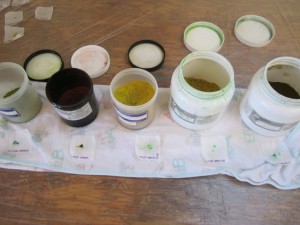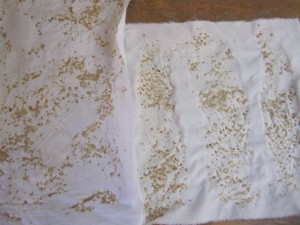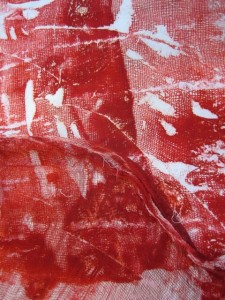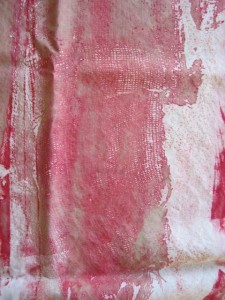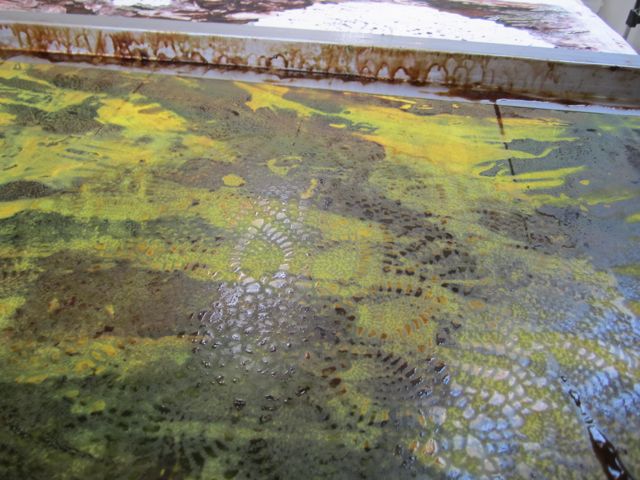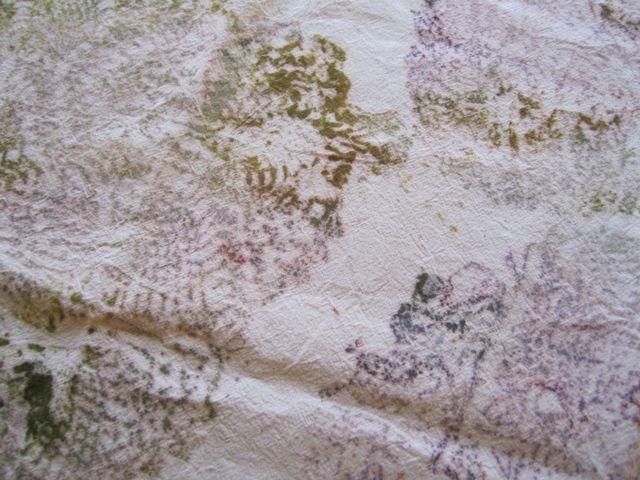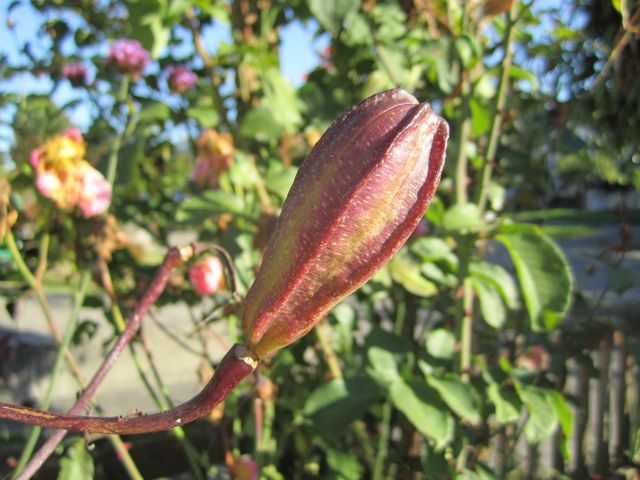
I’ve been developing a new series called Blades. It’s grown out of what I started this Summer working with grass, both literally and metaphorically. The Grasses Series was an investigation started by printing with blades of grass on the silk screen. I was thinking about grass and how it is so common that we don’t see it except as a green expanse in a manicured lawn, or as weeds coming up where we don’t want them. The idea of “grass roots” as a powerful way to spread information becomes clear when trying to weed long underground shoots out of flower and vegetable beds. The resulting fabrics turned out very interesting but I didn’t end up using them as I had intended in the pieces I made this Summer. They were either too small, or just weren’t right for those pieces.
The pieces I completed this Summer, which will be in a group show called Olive Branch at Foster/White in their December, ended up being more about grains and are titled Emmer and Spelt. Only one piece said “grass” to me and I titled it Stipa, a latin name for a type of grass.
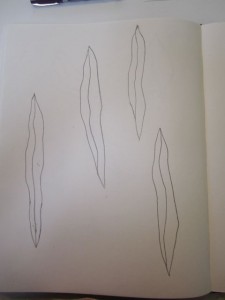
sketchbook images of blades
So I started working with the grass fabrics again this Fall, making some shapes that would work with them and the series morphed again. The grass shapes became Blades which have become a much deeper series than I originally intended. I currently have eight shapes made in paper and am planning on making four or five more. There’s another series brewing as well, the Cotyledons. I’m hoping to develop both of the series together. I’ve got three of the Cotyledons so far, hoping to do a good number of them along with the Blades.
I’ve been dyeing as I go along with the paper work. Although the fabrics may not be specifically for these pieces, I’m sure there will be some overlap. I’ve been trying to stay focused on working in the paper but sometimes I just need to take a break and get some color on fabric. These wet and dark Fall days have been good studio days for me. It’s easier to spend time concentrating in the studio when it’s raining outside.


